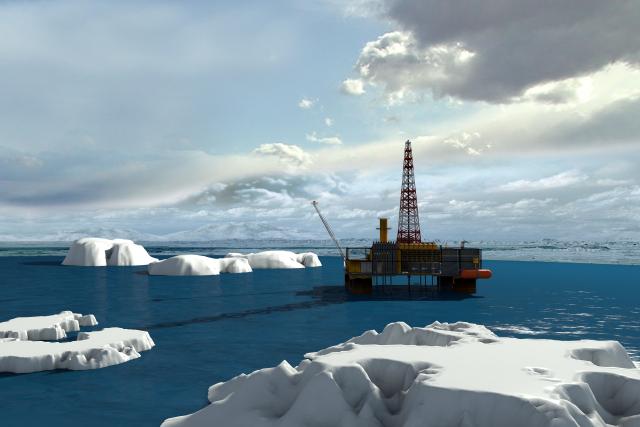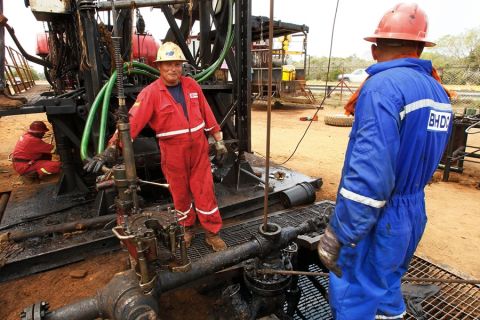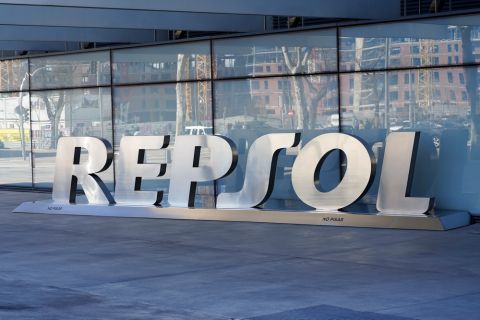
There is limited production activity in the Arctic region, with a handful of projects being carried out on the continental shelves of the U.S., Norway and Russia. (Source: vitstudio/Shutterstock.com)
The first major energy discoveries in the frozen expanses and frigid waters of the Arctic region date back to the 1960s. The U.S. Geological Survey (USGS) estimated that the Arctic holds about 47,289 Bcm (1,670 Tcf) of natural gas and 90 Bbbl of oil, which is 30% of the world’s undiscovered gas and 13% of its oil. According to the USGS, the Arctic shelves may constitute the geographically largest unexplored prospective area for petroleum remaining on earth. Energy analysts believe that investment in the Arctic will be determined by profitability, which in turn depends on a number of factors, including global commodity prices, new technologies, development of infrastructure, legal and political climates, and environmental concerns, according to the Council on Foreign Relations.
US
Alaska’s North Slope is generating a surge of interest from companies that have big exploration projects lined up this year. Several oil companies are looking to complete projects worth more than $10 billion by 2024, which will produce thousands of jobs if developed, according to Alaska’s Division of Oil and Gas.
Following the successful Willow discovery in 2017, ConocoPhillips Alaska is planning to drill six to eight exploration and appraisal wells in December of this year. The company will primarily target the Nanushuk Formation, where most of the recent discoveries were made.
According to a recent statement by Joe Marushack, president of ConocoPhillips Alaska, this exploration season will be the company’s largest in 16 years. He added that other reasons for renewed interest in the North Slope include stable taxes in Alaska, efficient drilling technologies and the overall trend of higher oil prices.
Construction of ConocoPhillips’ GMT2 Field is due to begin in December, with first oil expected in 2020, which will add up to 40,000 bbl/d, according to the company. In addition, in December BP will conduct a large 3-D seismic survey of Prudhoe Bay to study remaining opportunities. Data will be integrated with a previous North Prudhoe seismic survey to get a clear picture of the subsurface across the Prudhoe Bay Unit, according to a report by Alaska’s Division of Oil and Gas.
In 2008 the USGS estimated that 2.4 Tcm (85 Tcf) of natural gas could be recovered from hydrate-bearing formations in the North Slope. A strategic partnership was formed between the USGS, the Department of Energy’s National Energy Technology Laboratory, and the Japan Oil, Gas and Metals National Corp., with assistance from the Alaska Department of Natural Resources, to drill a test well in the Prudhoe Bay Unit to identify gas hydrate prospects. In April of this year, successful drilling operations confirmed the existence of two fully saturated high-quality gas hydrate reservoirs.
The test well is the initial phase of a planned three-well program designed to test the response of gas hydrate reservoirs to controlled depressurization, according to a recent report by the USGS.
The Pikka discovery is currently being overseen by Oil Search, which acquired a $400 million stake in the Nanushuk Formation in 2017. Geologists estimated the discovery to be one of the largest in Alaska. The company plans to drill two appraisal wells in December to further assess the field. The project is in the permitting phase, the final investment decision on which is expected in 2020. First oil is targeted in 2023 with a potential of 120,000 bbl/d.
In April Hilcorp Energy began production at the Moose Pad oil project in the Milne Point Field. Peak production of about 22,000 bbl/d is expected in 2020, as reported by Alaska’s Oil and Gas Division.
Additionally, Eni plans to drill up to three wells in the Nikaitchuq oil field, which is estimated to have recoverable reserves of 220 MMbbl of oil. Eni is using several proprietary technologies including zero flaring, spill containment devices in all modules and low-emission turbine generators, according to the Alaska Business.
Norway
The Norwegian Petroleum Directorate estimated that the Barents Sea holds about two-thirds of undiscovered resources on the Norwegian Continental Shelf (NCS).
In January Eni’s Vår Energi and license partner Equinor completed the Goliat West appraisal well, according to a press release. The Goliat West discovery provides evidence of Goliat oil field’s potential and will add to its profitability, Vår Energi CEO Kristin Kragseth said in a statement.
In March Vår Energi signed an agreement with Telenor Maritime to equip the Goliat Field with a 2G and 4G network to improve the safety and emergency response capability in the region. And in April SubseaPartner and Vår Energi entered into a contract to provide dive support to the Goliat Field.
The Petroleum Safety Authority of Norway found points of improvements in Equinor’s FPSO turret during a recent audit of the FPSO vessel in the Johan Castberg Field. The field is expected to produce for 30 years from the planned production start in 2022.
In May the Norwegian Ministry of Petroleum and Energy launched a licensing round of acreage in mature areas on the NCS. The ministry said it aims to award new production licenses at the beginning of next year. The predefined area for this year’s licensing round has been expanded by 90 blocks, of which five are in the North Sea, 37 in the Norwegian Sea and 48 in the Barents Sea.
Russia
Despite Russia’s vast reserves in the Arctic, it is unable to exploit them to their full potential due to sanctions, technological shortcomings of the state-owned companies and their unwillingness to cooperate with private experienced Russian companies, according to a recent article by Stanislav Pritchin, academy associate of Russia and Eurasia Program at Chatham House.
Gazprom Neft’s Prirazlomnoye Field is the only oil-producing field in the Russian Arctic Shelf. In April the company announced a milestone of 10 MMtons of oil production. Construction of two further wells is expected to be completed before the end of the year.
In April Gazprom and Shell signed a memorandum to construct the third production train of the Sakhalin-2 LNG plant, which operates two production lines, with a combined capacity of 10 MMtonnes per year (mtpy) of LNG. The third train is expected to add another 5 MMtonnes.
In May Gazprom discovered two new fields containing more than 500 Bcm (17.6 Tcf) of gas in the Kara Sea. During the same month, Novatek announced the development of a third LNG project in the Yamal region. Novatek’s projected new plant is set to become operational in 2023 and will produce up to 4.8 mtpy of LNG.
The development of the Ob LNG will run parallel to the Arctic LNG 2, the company’s far bigger project currently under development on the nearby Gydan Peninsula in the northern part of Siberia, according to a report by The Barents Observer. The Arctic LNG 2 will produce up to 19.8 MMtons, and the first of the three trains will begin operating in 2023. In July TechnipFMC was awarded a $7.6 billion engineering, procurement and construction contract by Novatek and its partners for the Arctic LNG 2 project.
Recommended Reading
US Orders Most Companies to Wind Down Operations in Venezuela by May
2024-04-17 - The U.S. Office of Foreign Assets Control issued a new license related to Venezuela that gives companies until the end of May to wind down operations following a lack of progress on national elections.
US Decision on Venezuelan License to Dictate Production Flow
2024-04-05 - The outlook for Venezuela’s oil industry appears uncertain, Rystad Energy said April 4 in a research report, as a license issued by the U.S. Office of Assets Control (OFAC) is set to expire on April 18.
US Threatens to Not Renew Venezuelan Energy Sector License
2024-01-31 - The U.S. Department of State alerted Venezuela that it could decide not to renew General License No. 44 amid what Washington has labeled “anti-democratic actions.”
Repsol Eyes Increasing Core US Upstream Business
2024-02-29 - Madrid-based Repsol SA will invest €$2.2 billion (US$2.38 billion) between 2024-2027 on its unconventional assets in the Marcellus and Eagle Ford as it focuses on increasing its core U.S. upstream business platform.




